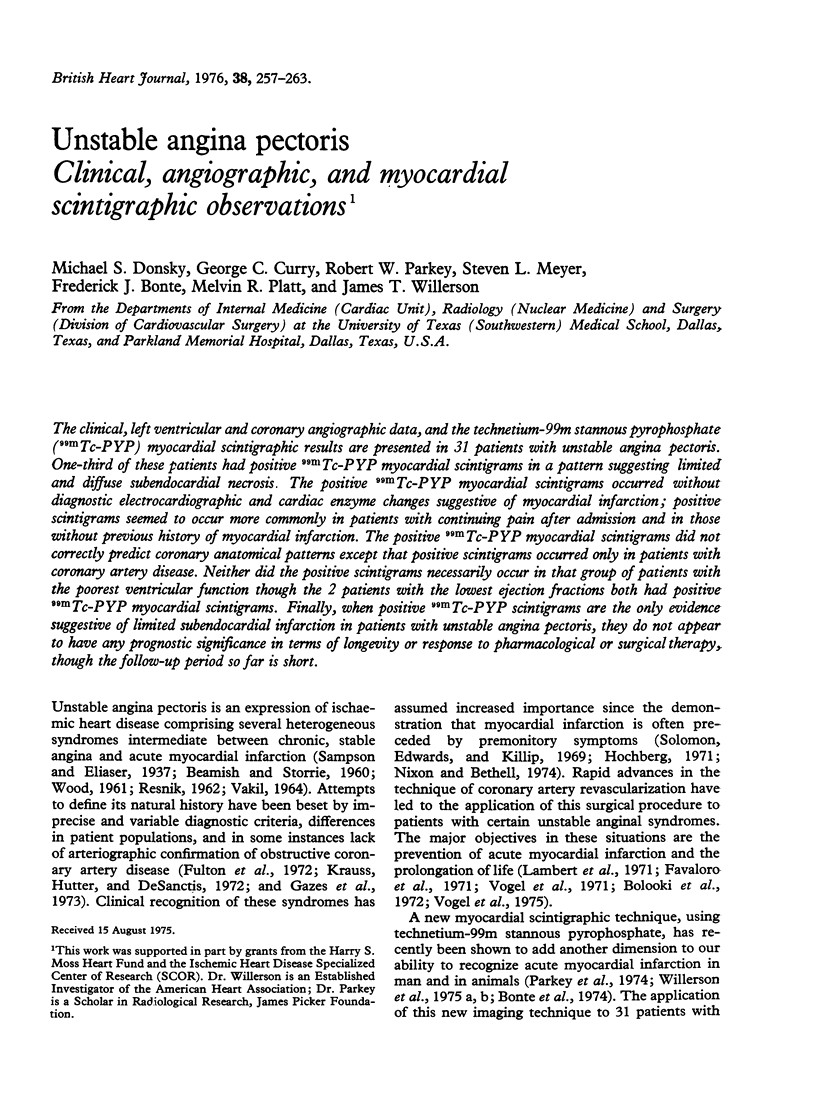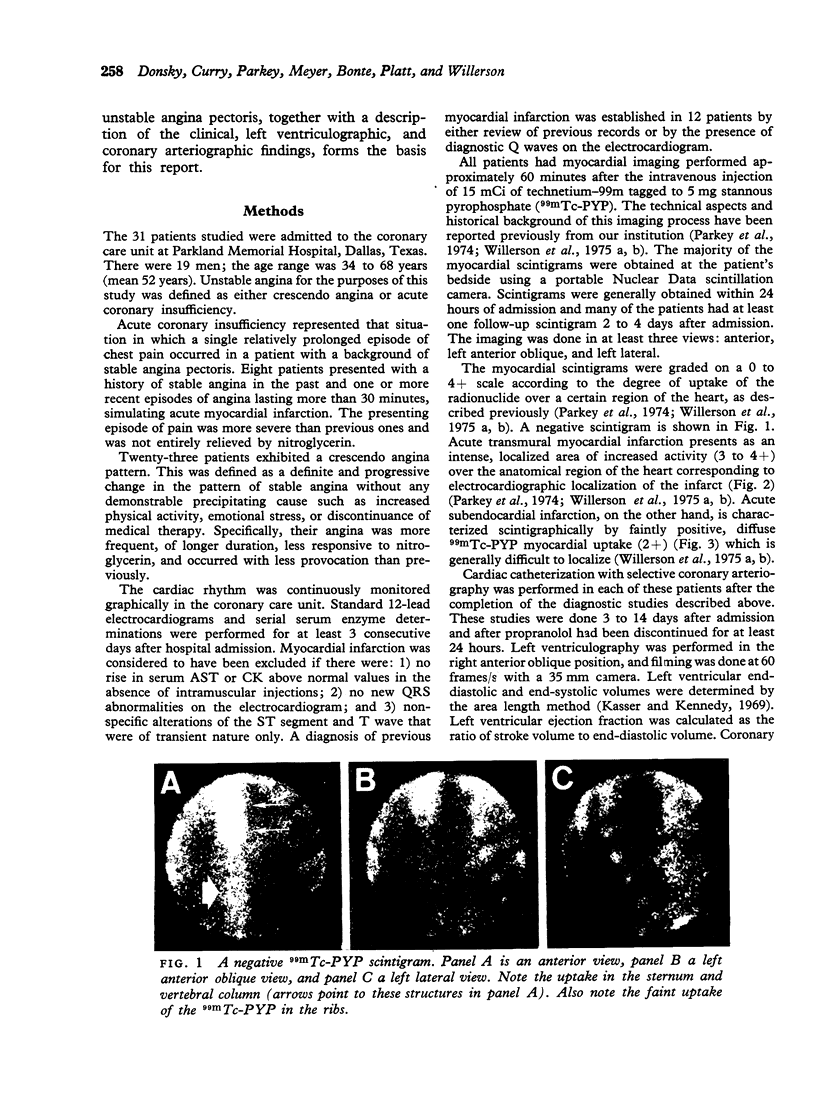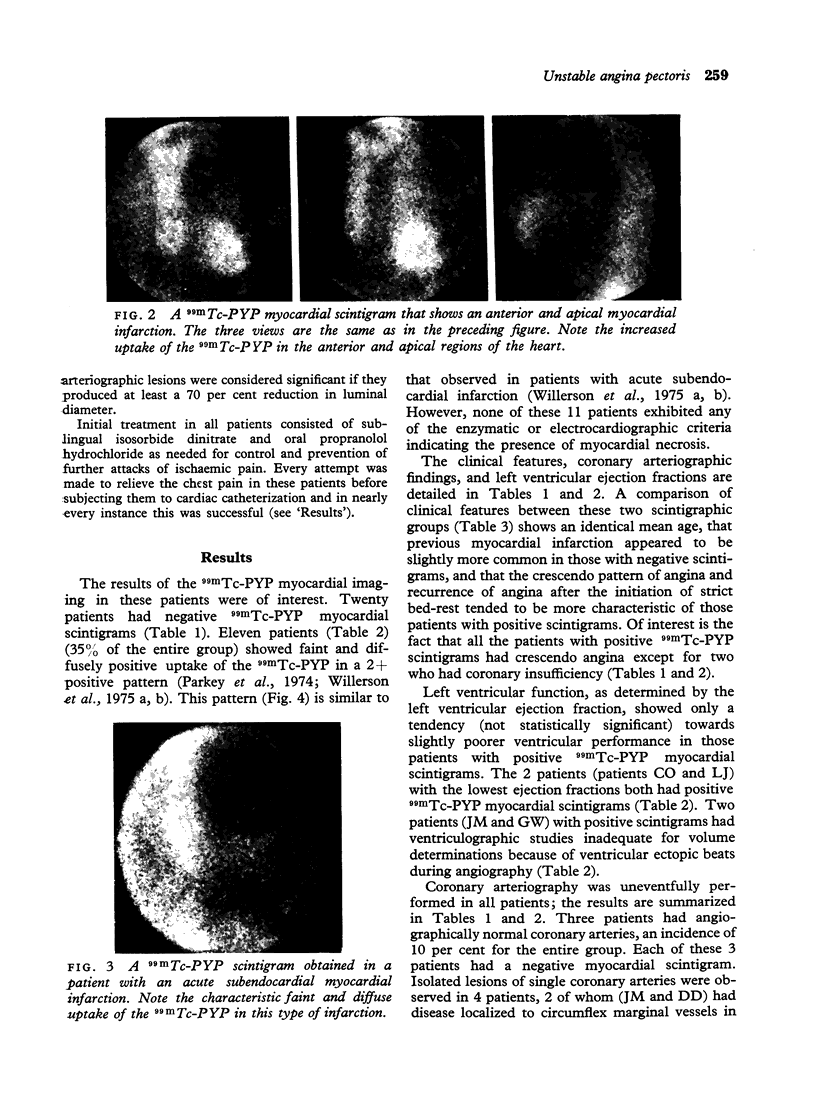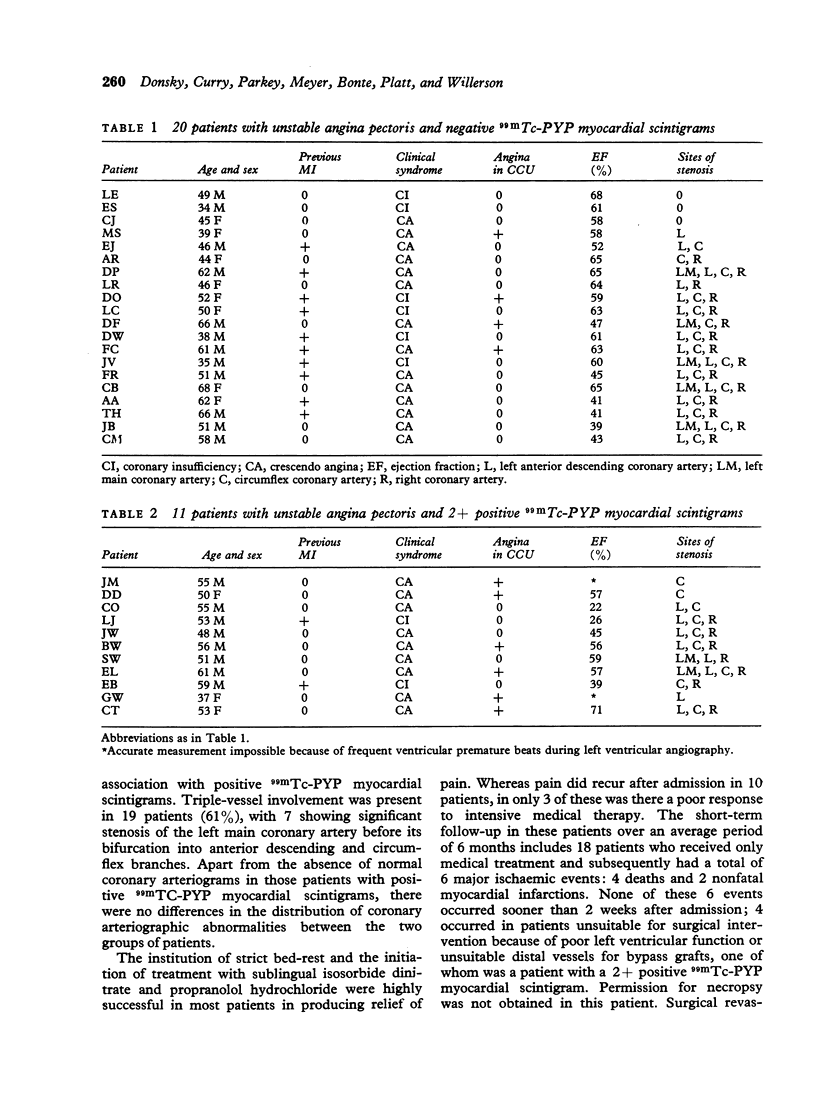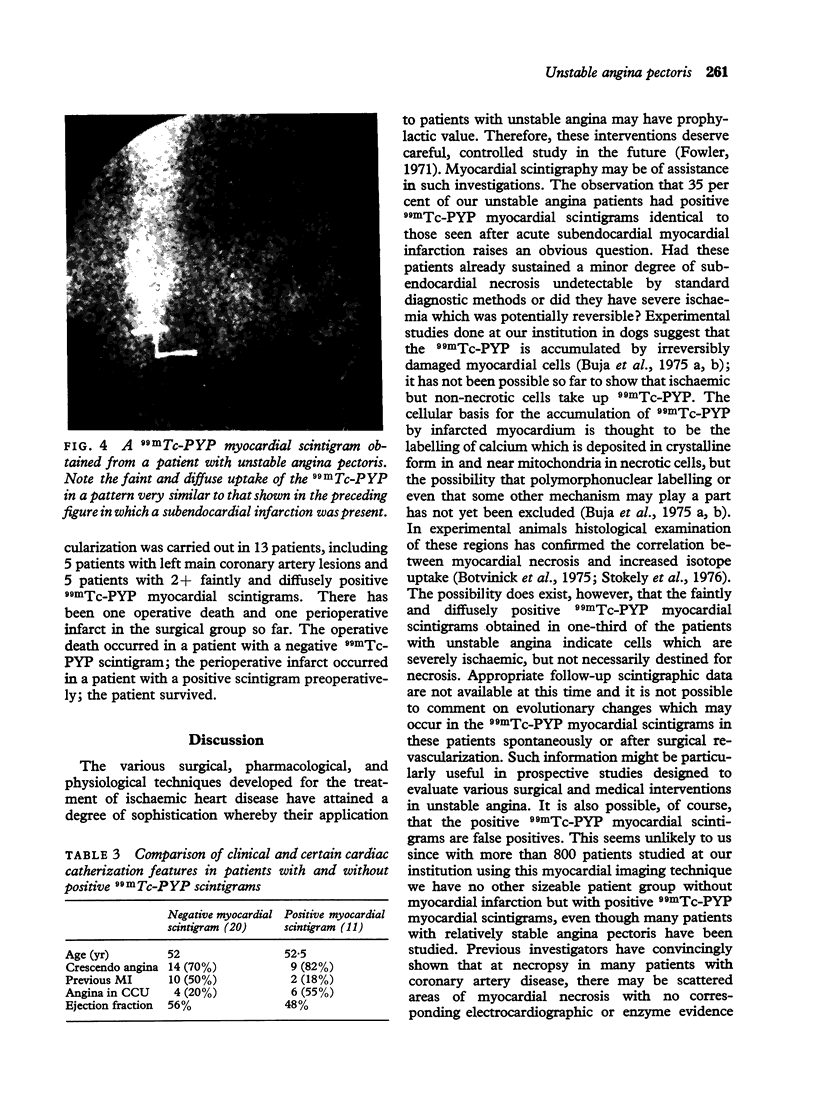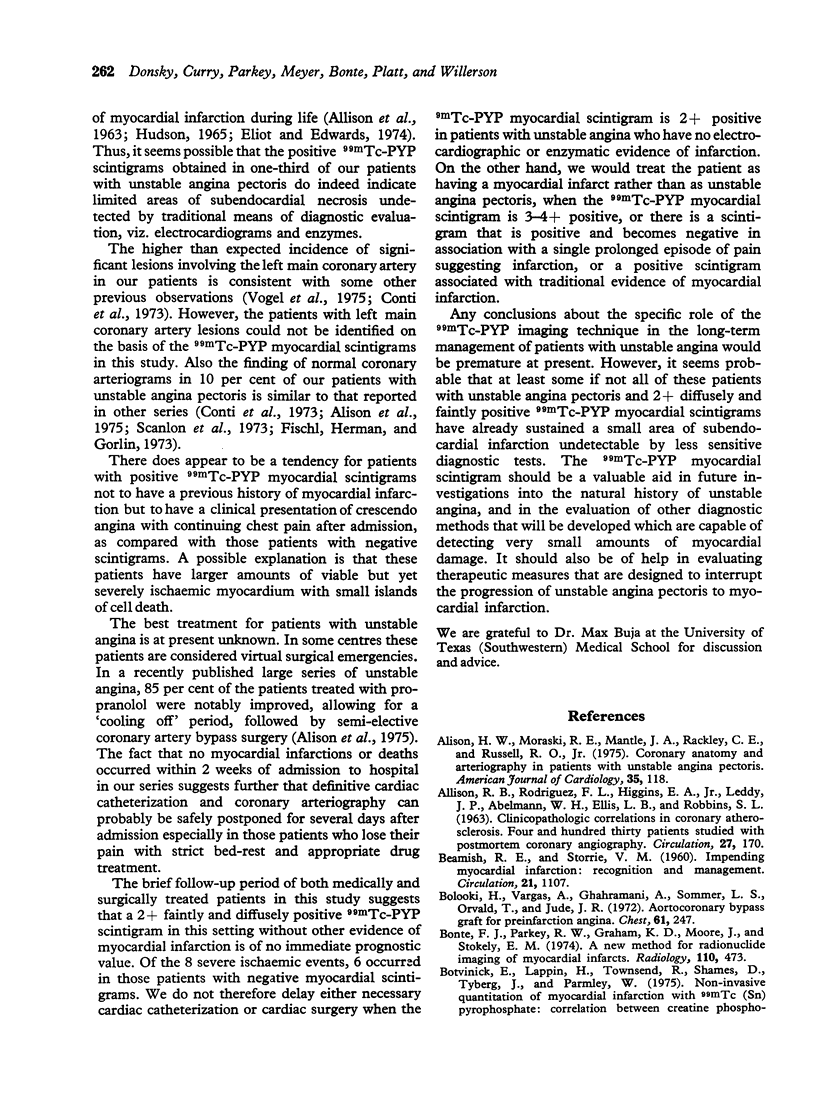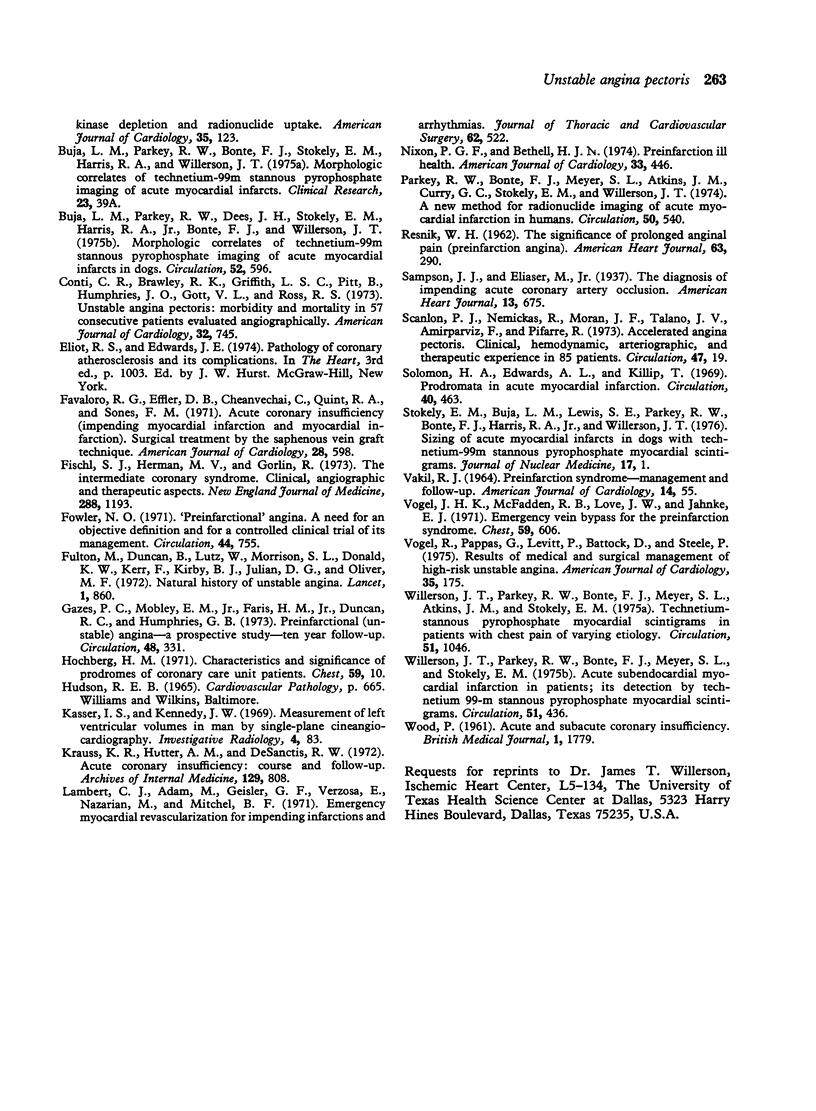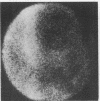Abstract
The clinical, left ventricular and coronary angiographic data, and the technetium-99m stannous pyrophosphate (99mTc-PYP) myocardial scintigraphic results are presented in 31 patients with unstable angina pectoris. One-third of these patients had positive 99mTc-PYP myocardial scintigrams in a pattern suggesting limited and diffuse subendocardial necrosis. The positive 99mTc-PYP myocardial scintigrams occurred without diagnostic electrocardiographic and cardiac enzyme changes suggestive of myocardial infarction; positive scintigrams seemed to occur more commonly in patients with continuing pain after admission and in those without previous history of myocardial infarction. The positive 99mTc-PYP myocardial scintigrams did not correctly predict coronary anatomical patterns except that positive scintigrams occurred only in patients with coronary artery disease. Neither did the positive scintigrams necessarily occur in that group of patients with the poorest ventricular function though the 2 patients with the lowest ejection fractions both had positive 99mTc-PYP myocardial scintigrams. Finally, when positive 99mTc-PYP scintigrams are the only evidence suggestive of limited subendocardial infarction in patients with unstable angina pectoris, they do not appear to have any prognostic significance in terms of longevity or response to pharmacological or surgical therapy, though the follow-up period so far is short.
Full text
PDF